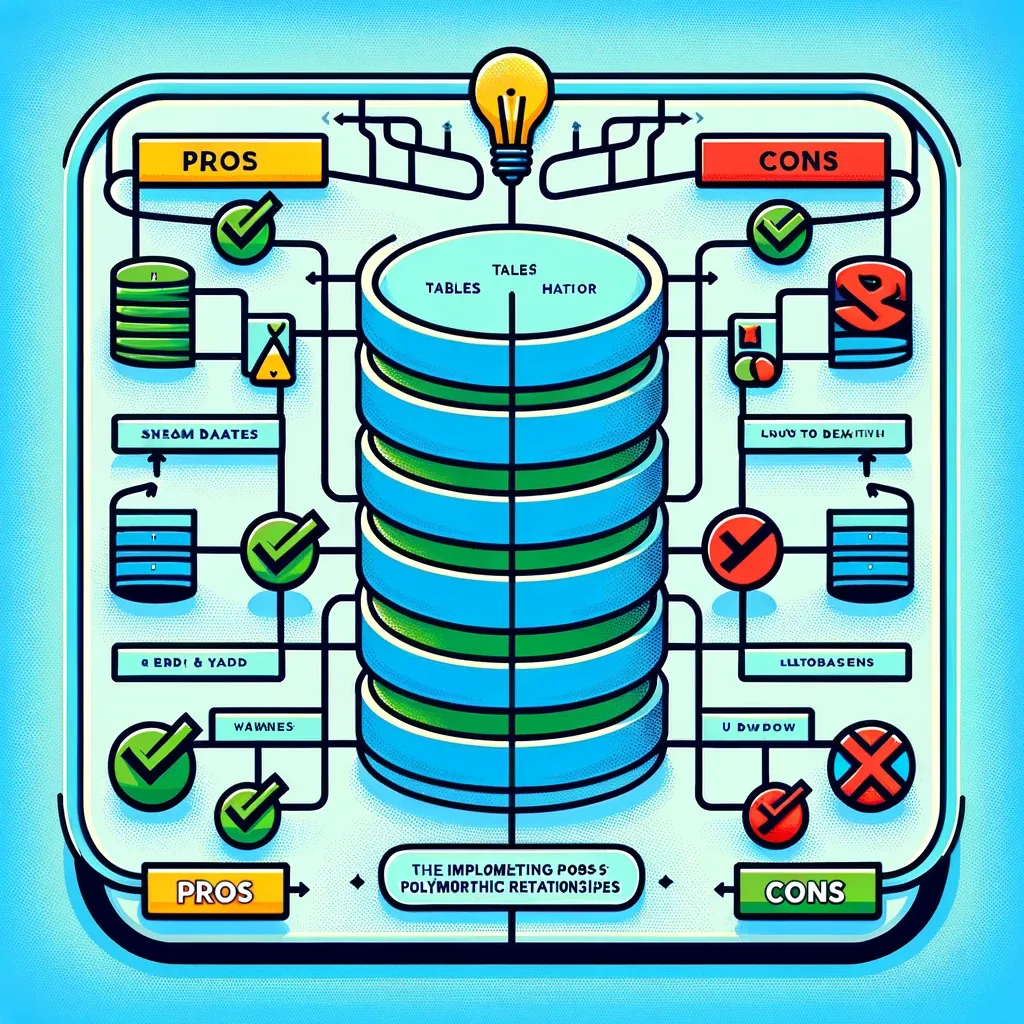The Pros and Cons of Implementing Polymorphic Relationships in SQL Databases
Polymorphic relationships offer flexibility in databases but risk data integrity and increase query complexity. Use them sparingly, with checks for integrity and consider alternatives to maintain performance and integrity.

Polymorphic relationships in relational databases offer flexibility in modeling various types of associations within a single framework. However, whether they are a good idea depends on the specific requirements of your application and the trade-offs you are willing to make. Here are some considerations:
Advantages
- Flexibility: Polymorphic relationships allow a single foreign key to reference multiple types of entities, making it easier to associate a wide variety of objects with a single entity.
- Simplification: They can simplify the schema by reducing the number of tables and relationships needed to represent complex associations between different entity types.
Disadvantages
- Referential Integrity: Traditional relational databases like MySQL enforce referential integrity through foreign keys, which isn't directly possible with polymorphic relationships. This means you can't rely on the database to automatically ensure that all references are valid, leading to potential data integrity issues.
- Query Complexity: Queries involving polymorphic associations can become more complex and less intuitive, especially when you need to join multiple tables based on the type of the associated entity.
- Performance: The need to filter by an additional column (
entity_typein many implementations) and potentially join multiple tables to retrieve all related entities can lead to performance issues, especially as the dataset grows. - Database Features Limitation: You might not be able to use some database features, such as cascading deletes, as straightforwardly as you would with standard foreign key relationships.
Best Practices
- Use Sparingly: Consider polymorphic relationships only when you have a clear use case that benefits significantly from this flexibility, and the disadvantages are manageable within the context of your application.
- Application-level Integrity: Implement checks and balances in your application code to ensure data integrity, given the database won't enforce referential integrity for polymorphic relationships.
- Documentation: Thoroughly document your database schema and the logic behind any polymorphic relationships to ensure that future developers can understand and maintain the system effectively.
- Alternative Approaches: Evaluate alternative data modeling techniques, such as table inheritance (using a separate table for each entity type but with a common structure) or entity-attribute-value (EAV) models, to see if they might meet your needs with fewer trade-offs.
In summary, while polymorphic relationships can be powerful for certain use cases, they come with significant considerations that might make them less suitable for traditional relational database systems, especially when data integrity and performance are top priorities.
